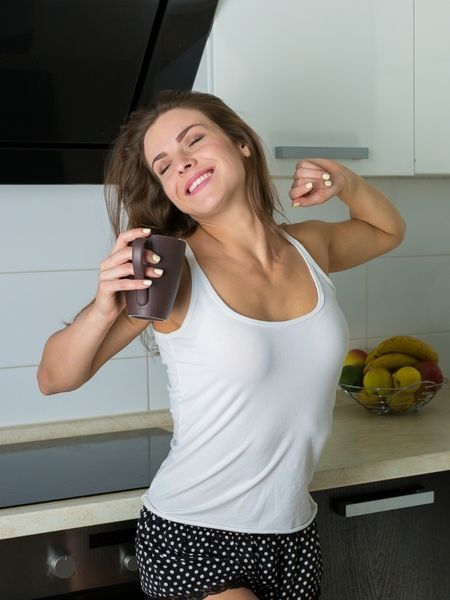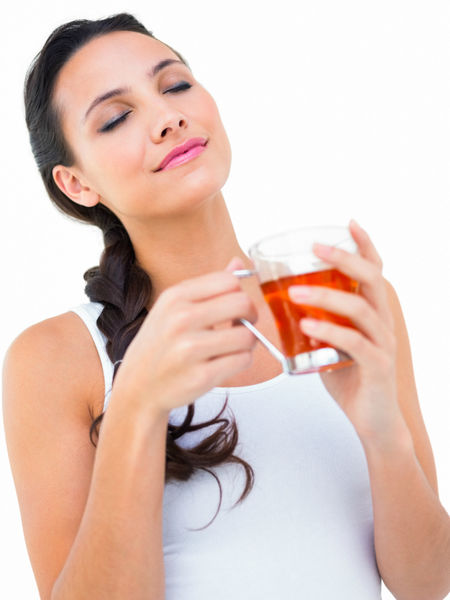Energize with Tea!


One of the fascinations about true tea, that precious leaf of the Camellia sinensis plant, is its ability to relax the body, energize the spirit, and sharpen mind.
Just as some folks need a cup of coffee to start their day, others need a bracing cup of tea and from so many choices: single-estate blacks from Sri Lanka, India, or China or classic “breakfast blends” that artfully combine the best from black tea-producing countries.
What shall you apply all that energy to?
The practice of meditation? A hike in the woods? The demands on your mental energy tackling the problems of work or volunteering? Dancing the night away?
All can be enhanced by drinking tea before and after activities. For example, drinking some tea after a busy morning can help you physically relax, clarify how well the tasks were done, and stimulate you to continue your day’s work. Drinking tea is a multi-layered treat after meditation. While meditation may not be deemed “activity,” it takes a lot of energy and focus to quiet the mind and relax the body enough to meditate deeply. Drinking tea after your practice will reveal more nuances of flavor in the tea and help connect the body and spirit to move onto the next activity of the day.
Although tea has a decided diuretic impact, drinking small quantities before exercising can help stimulate perspiration and energize your workout. If you’ve had a day locked into the office, seated at the computer, and concerned about a long driving commute home, a cup of tea can elevate your spirits, sharpen your focus to make you an alert driver, and the treasured flavor of your favorite tea will enhance your mood … almost home!
Why does tea both relax and stimulate?
The reason for this dual action is the presence of chemical elements that appear naturally in the leaves: L-theanine, theobromine, theophylline, and to a smaller degree, caffeine. It is important to note that these elements in tea are in minute quantities, but depending on your personal reactions, can impact you mildly or strongly, so always listen to your body before selecting your teas.
In addition, the stronger you brew the tea and the more cups of tea you drink, the more chemical elements you will consume. Caffeine is the most well-known of these stimulants and it’s important to note that a tea has at least half and sometimes up to three-fourths fewer stimulants per cup than hot chocolate or coffee.
Size is important to consider, too. Most stats related to stimulants are based on dinnerware cup sizes of 5 or 6 ounces. Your local tea and coffee shop averages 14 to 20 ounce servings! You don’t even have to “do the math” to figure that you’re getting quite a bit more tea in quantity and, therefore, more stimulating xanthines in your purchased ”cup” of tea. Caveat emptor, or “even better”, make tea yourself to control your xanthine intake. Six to 8 ounces should be enough to tackle any activity.
It is impossible to know exactly how many xanthines are in any type of tea in any season of any year. So much depends on how the tea is grown, where it is grown, and most importantly, how it is processed. Even the occasional white or green tea has been shown to have more xanthines than fully processed blacks. It is just one more anomaly in the processing of tea that puzzles chemists and tea lovers alike. It’s also reason to develop sources for your teas who taste, test, and accurately describe the stimulant profile. Lastly, and most assuredly, follow your tea vendor’s directions for brewing the tea. Over brewing not only could increase the xanthine effects, it can seriously impact the complexity and the subtle variations in the flavor profile and keep you from enjoying the nuances that develop from careful processing.
So what are the stimulants in tea, and why does tea, in particular, make us both physically energized and mentally sharp?
Theanine (aka L-Theanine) is an amino acid that helps modulate certain aspects of the brain by significantly increasing the activity in the alpha frequency (upping our ability to pay attention and focus.) This is why tea relaxes the mind without inducing drowsiness. It clarifies our thinking and improves memory.
Theobromine (3,7 dimethyl xanthine) is a xanthine alkaloid which works as a bronchodilator (to help one breathe easier) and a vasodilator (to help exercise the heart.) It can keep one physically energized, elevate our mood, and mentally stimulate our brains, often for several hours, for most people. Alas, it’s also why tea can make one pee, although it is a weaker diuretic and weaker vasodilator than theophylline. It does not impact the central nervous system.
Theophylline is a methylxanthine derivative that acts as a smooth muscle relaxant (vasodilator) and aids breathing (bronchodilator) and can stimulate the central nervous system, although at a much lesser level than caffeine. It aids the lungs to deepen the breath, stimulates the muscles of the heart, and energizes the body. It has diuretic properties.
Caffeine is a methylxanthine (a central nervous system stimulant) found in chocolate, coffee, and, to a much lesser degree, in tea. In fact, there is one-fifth the amount of caffeine in a pound of tea than in a pound of coffee. Caffeine is the most studied stimulant in all of the history of chemistry. For more than 100 years, thousands of studies have been designed to discover the hows and whys of caffeine’s impact on mind and body, and the conclusions are almost always the same: Caffeine may quicken the heartbeat, give one the feeling of energy, and clear the mind. Too much caffeine or an over-reaction to caffeine may disrupt sleep. The caveat, “may”, is here because for many people, caffeine provides a contrarian effect—it puts them to sleep! Let your body be your guide. If teas (or other caffeinated foods and drinks) keep you up at night, stop consumption after 2 p.m.
More than 60 xanthines appear in plants, tree leaves, and herbs, and are natural, life-enhancing, and non-addicting. Mateine appears only in Yerba Mate and L-theanine appears in tea. Herbals/tisanes from flowers, tree barks or leaves, or herbs do not have xanthines and are particularly good for flavoring true teas or to drink alone for calming the nerves. Chamomile, in particular, is helpful to induce sleep.
So, whether you choose to drink your tea in the morning or the evening, before meditation or before a workout, you’ll now know the concoction of energy producing, and relaxation providing, chemicals that are at work in your body.
Heather Edwards is a tea-loving collage artist who has experimented (sometimes successfully) with incorporating spent leaves, tea bags, and other tea paraphernalia in her greeting cards and collages. When not making art, she’s writing about, thinking about, and drinking tea, preferably Golden Monkey or Sencha. She is a dedicated writer of haiku—- tea related, of course!
